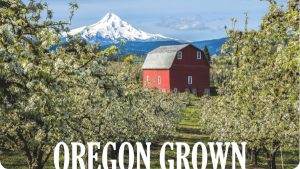In addition to global trade concerns, Oregon producers are suffering from a lack of two critical resources: labor and water.

“The most difficult trend is lack of decent help,” said Sam J. Caruso, president of Caruso Produce, Inc. in Portland. “Finding good drivers and warehouse workers is difficult.”
Jim C. Cheyne, general manager for Circle C Marketing, Inc. in Malin, echoes the sentiment.
“We’ve had a lot of labor shortages, and it’s a big problem,” he said.
Without workers from Mexico, he said, “We wouldn’t be in business—but it’s really difficult now to get them to work for us.”
Caruso agrees, saying increased regulation via the H-2A guest worker program makes it harder than ever to hire seasonal workers.
“Farmers now have to pay housing, transportation, and other costs for their seasonal workers,” he said. “They’re more highly regulated than ever. I fear the era of the small family farm will end due to too much government intervention.”
When it comes to the labor challenge, growers aren’t alone. Oregon businesses across multiple industries are struggling to find workers. With the state jobless rate at a record low, qualified applicants are few and far between.
According to report by the Oregon Employment Department, the number of hard-to-fill Oregon job vacancies is up 150 percent over the past five years, and farm workers were among the most difficult to fill.
“Everybody is feeling the pressure from the labor shortage,” Kern said. “Not knowing what the future holds, there’s been a tremendous surge to automate wherever possible.”
To add insult to injury, Oregon is also in the midst of a severe drought. According to the National Integrated Drought Information System, 93 percent of the state is in a drought and 100 percent is classified as “abnormally dry.”
The drought was born out of a combination of record heat and scant rainfall. In the last quarter of 2018, the precipitation level in western Oregon was at its lowest point in 40 years.
“It’s a bleak picture if you look at the water situation and the labor situation,” Cheyne said.
“We want to invest in more sophisticated machinery, but it’s hard to spend the money updating equipment when you’re not sure you’re going to have the water you need to raise your crops. The water is a dire need—we’re awful close to not having irrigation water here.”
This is an excerpt from the most recent Produce Blueprints quarterly journal. Click here to read the full article.


